Fiestas of the Yucatan
Fairs vs Fiestas
We often hear that someone went to a fiesta and could not find it or could not find the artisans. We thought we would clear up the difference between a Fair and a Fiesta so that won’t happen anymore. At a fair, one can expect to see all of the booths set up by all of the local artisans – all in one area. Fiestas, on the other hand, are usually religious events that have a smaller, less well organized area for games and such. At a fiesta, there will be processions by different groups of workers, with plenty of church services in which visitors can admire the newly renovated churches throughout the state. At a fiesta, if you came looking for the work of artisans, more than likely, you will have to ask around and visit the artisans in their homes or workshops.
The Yucatan Is Not Specific
The following list is full of dates, and we must warn you that they may not be specifically correct for any given year. Rather than exact recipes, think of them as serving suggestions. Surely, some dates are precise: the Virgen de Guadalupe is always celebrated on December 12, for instance. But some of the dates for these fiestas are determined in relationship to the moon, to Easter, to who knows what. If you go to a specific little town looking for a specific thing that turns out to not be there, don't despair and don't be mad at us! No matter when you go, no day wandering the Yucatecan countryside is ever wasted! We hope you enjoy yourself no matter what happens, for this is one of those lessons that Yucatan teaches us all.
Municipal Fiestas
Tizimin - Dec. 29 through Jan. 6 (and then some…. )
We hardly know where to start telling you about this fiesta! It seems that it is not going to end! We often see events scheduled through the middle of January! This fiesta is in honor of Santos Reyes (the Three Kings). Don’t think of this as just the end of a Cowboy Christmas. Tizimin is a huge municipality (county) that extends from whaleshark-watching territory on the northern coast to the traditional Mayan lifestyle in the south. While this is a cattleman’s wonderland, the shopping here is across the board: fine jewelry, pottery, leather work, pirograbado (wood carving by burning), artistic carpentry, and much much more!
Chikindzonot - Jan. 6th and 7th
This fiesta is in honor of Reyes Magos. Chikindzonot is located just about in the center of our southern border with Quintana Roo. If you are into cenotes and/or the architecture of the 16th and 17th centuries, this is the place for you. Chikindzonot also has more than its share of archaeological monuments at: Xalau, Tamba, Bolmay, Petul, Sotpol, Xuyap, Poxil, Xcoom, Palaban, Xmaos and Xcan. Municipalities like this are the as yet unspoiled treasures of our state and we are remiss if we do not visit and support them in any way we can. One last word to the wise… a designated driver might be a good idea, since three favorite drinks in outlying municipalities, such as Chikindzonot, include: Xtabentun, Balché, and Bebida de anis.
Santa Elena Fiesta - Jan. 10th through Jan. 24th
This fiesta is in honor of Santo Cristo del Amor. Many of our readers are familiar with Santa Elena, as it is so close to the archaeologoical zone of Uxmal. It is to the southeast of Merida, and forms part of our border with the State of Campeche. There are loads of archaeological sites here, including: Uxmal, Kabah, Nohpat, Xcoh and Muchich.
Happy Birthday Merida! - January 6th
Over 200 events take place in the Municipio de Merida de Yucatan between January 3 and January 23 when Merida celebrates its birthday.
Dzitas Fiesta - January 16 through January 22
This fiesta is in honor of Santa Inés. The Municipality of Dzitas is a small “county,” located in the central-eastern part of the state, just south of Espita. There are fewer than 3,500 people who live in Dzitas, and their main artistic skills are turned toward the making of hammocks. It is the population statistics that are interesting in this municipality. Almost half of the people work in agriculture, most of the rest work in manufacturing or go off to work in the oil industry. Over 90% have all the modern utilities coming to their homes and they have plenty of schools, including a college. Two-thirds of the people are indigenous, so the languages spoken in Dzitas are Spanish, Mayan, and Tzeltal. The food and health care are excellent because the birthrate is steady and the death rate is amazingly low. Take a trip out to this fiesta and let us know if you discover their secret to a long and healthy life.
Temax Fiesta - Last Week of January
This fiesta is in honor of la Virgen de la Purísima Concepción. Temax is located a couple of small municipalities inland from the beach, at about the center of our coastline. They are close enough to the beach that turtles are listed as part of the wildlife found there. Of the 3,231 folks who live in Temax, 2,392 are Mayans and Mayan is the principal language spoken there. Temax has some of the most exciting recent (20th century) history in all of Yucatan. Read about it HERE.
Valladolid Candelaria Fiesta - January 26 through February 3
This fiesta is one of the most important fiestas in the state. It is held in honor of Mary, mother of Jesus, to confirm that, for Catholics, Jesus is the Light of the World. It also marks the time when the chicle workers returned from months of hard work in the forests, and it honors the beekeepers and other farmers. All events focus on the community and the family unit. The fiesta eventually grew so large that it began causing damage to the city itself, so it was moved to a commercial area, Los Gavilanes, which is in the outlying suburbs of Valladolid. Candles are still lit to the Virgin in the annex of the Church of the Candlemas. While no one was paying attention, this sleepy little rodeo town has grown into a commercial, tourism and industrial giant and, with the elevation of nearby Chichen Itza to the status of New Wonder of the World, Valladolid has become a tourist mecca. Visit Yucatan Living's article about The Sultaness of the East.
Tekal de Venegas Candelaria Fiesta - January 28 through January 31
Tekal de Venegas is a tiny municipality in the north-central part of the state. It is south of Temax and Dzoncauich, north of Izamal and Tunkas, west of Tunkas and Cenotillo, and east of Tepakan. Only about 2,300 people live there and half of them are indigenous. Their languages are Spanish, Mayan, and Nahuatl. More than half of the population works in agriculture, cattle ranching, or fishing. Tekal de Venegas is also where you will find Ox Watz, a well designed ecotourism area owned by 56 partners who are native citizens of Tekal de Venegas. Sounds like a wonderful photography opportunity to us.
Tzucacab Candelaria Fiesta - January 28 through January 31
Tzucacab is located on the southern border of Yucatan, just east of the point. It lies between Tekax and Peto, and shares its southern border with the State of Quintana Roo. Approximately 12,600 people live in Tzucacab, about 7,000 of whom are Mayans, for whom Mayan is the principal language. This is farming and cattle country, so look for lots of leatherwork here. But the extreme southern part of our state also happens to produce artisans of fine jewelry, so be on the lookout for jewelry too. Remember that there are volunteer farming opportunitiesin Tzucacab as well. Tzucacab also has within its borders Rancho Hobonil which is home to one of our favorite programs, the International Veterinary Medicine program, sponsored by the University of Florida. One of last year’s students was kind enough to post about her time in Yucatan here.
Hunucma Fiesta - January 28 through January 31
This fiesta is in honor of Corpus Cristi. Hunucma is the poster child for “Change Has Come.” This municipality extends from just east of Merida, all the way to the coast. To help you get your bearings, Sisal is in the Municipality of Hunucma. Hunucma (the city) has a newly refurbished gateway into the city, a new addition to their municipal mercado (city market), and a brand new concha acústica (acoustic shell). The entire municipality is looking forward to new highways and leaving no stone unturned in their efforts to improve the quality of life for everyone in the municipality. Lots of agro-products are made here, but the shoppers among us go for the shoes! Artisans produce works from coconut shell and henequen, as well as jewelry and leatherwork. On the coast, there are flamingos and great seafood! Hunucma is close to the city and a day at any of their fiestas is well worth the visit.
Kantunil Fiesta - January 31 through February 4.
This fiesta is in honor of the Virgen de la Candelaria. The hallmark of this fiesta is its many religious and union processions. Kantunil is between Izamal, on the north, and Sotuta, on the south. According to the MileByMile map, the exit from the Merida to Cancun toll road (autopista de cuota)is a little under 40 miles from Merida. .
Tunkas Fiesta - January 30 through February 2
This is the Tunkas County Fair. Tunkas is 86 km southeast of Merida, almost in the exact center of the state. It has just under 4,000 inhabitants, about half of whom are Mayans. This is farming and cattle-ranching country, so look for huipiles, hemp hammocks, and pottery here. The food is great, but watch out for the spicy habaneros. Tunkas suffers from a high level of poverty and, as a result, has a high rate of migration to the U.S. The municipality is one of three sites in Mexico that are being studied by the University of California at San Diego in their International Migration Studies program.
Tecoh Fiesta - February 2
This fiesta is in honor of the Virgin de la Candelaria. If you look at a map of the Municipality of Merida, you will see Tecoh down at the far southeast edge. The artisans of this area excel in the areas of making machine embroidered huipiles, hemp hammocks, and woodcarving. Tecoh means “Place of the Puma” and most of the buildings in the town of Tecoh are built on top of pre-Columbian foundations. This is a great area that far too many tend to overlook.
San Felipe Fiesta - February 5
This fiesta is in honor of San Felipe de Jesus. San Felipe is between Rio Lagartos and Dzilam de Bravo and is rapidly becoming quite a tourist destination. Any seafood you can think of can be found here and it is a great place to see waterfowl, turtles, and flamingos.
Opichen Fiesta - February 23 through February 27
When you get to Maxcanu, turn left to go to Opichen or right to go on to Halacho and Becal, which is the land of fine Panama hats woven in caves. All but a few of the residents of Opichen are Mayans, so Mayan is the language that is most common in Opichen. This is a traditional “county fair.” Look here for great leatherwork.
Cantamayec Fiesta - March 25 through March 28
This traditional county fair is located in the central part of the state, just south of Sotuta and west of Teabo. Look for geat hammocks here! Also look for the 17th century Temple of San Luis and the 18th century Temple of San Miguel Arcangel. The Ohican Archaelogical Zone is located here as well. There are a total of 11 cenotes in Cantamayec. Cholul and Hunchi Ich are suitable for diving. Kochola is suitable for swimming, observing and diving. All three have have beautiful blue water. We suspect that one could live in the State of Yucatan for a lifetime and never get to the end of a very long list of hidden treasures. This is an area where some of those treasures are often overlooked.
Easter or Semana Santa - sometime in March or April
Easter comes at a different time every year. But when it comes, it makes a big splash in Merida and the Yucatan. City dwellers go in droves to the pueblos along the Yucatan Gulf Coast like Progreso, Chelem, Chuburna, Telchac, etc. to enjoy a few weeks in the sun. The weeks leading up to Easter are full of ritual and ceremony... our favorite is Palm Sunday in Merida where any number of handmade palm decorations can be bought from artisans in front of the Cathedral in the Plaza Grande. Also, the place to be on Easter Sunday is Acanceh, a small town south of Merida, where the complete Passion Play is played out on the streets of the town. The townspeople are dressed in costume and follow along as Christ's story is reenacted by other townspeople, including a dramatic crucifixion in front of the town's ancient Mayan pyramid. You can see a complete video of the Passion Play in Acanceh here.
Timucuy Fiesta - April 10 through April 15
Timucuy is a small municipality on the southeast border of the Municipality of Merida. It is between Merida and Acanceh, north of Tecoh. This is a traditional fair complete with vaquerias and popular dances. The people of Timucuy love their music and you can expect to see traditional Yucateca jarana music and dancing, plus loads of trova and bolero music. The artisans in Timucuy make hammocks and, if you've been looking for cross-stitch embroidery, this is the place you will find it. Since this is an agricultural municipality, expect good country cooking to be available at this fair.
Akil Fiesta - April 14 through April 20
This fiesta is in honor of St. Ines. There will be street dancing and jaranas competition dancing. Akil is a tiny municipality in the southern part of the state, bounded on the north and south by Mani and Tekax, and on the east and west by Teabo and Oxkutzcab.
Tekal de Venegas Fiesta - April 15 through 19
This fiesta is held in honor of San Pedro. Tekal de Venegas is located in the north-central part of the state and is in two sections that are connected by only a thin strip of land, so it has 2 neighbors to the north (Temax and Dzoncauich) and 2 neighbors to the south (Izamal and Tunkas). The two most widespread languages spoken here are Maya and Nahuatl. There ae two great temples in Tekal de Venegas, one to San Roman and the other to San Pedro, that make this trip worthwhile.
Tekax Fiesta - April 18 through 22
This fiesta is a celebration of Spring. Tekax is a great place to visit. It has huge colonial churches and plenty of archaeological sites to see. Look for leatherwork and jewelry and, in a town named Pencuyut, look for hammocks. Tekax is the big municipality that goes right down to the southern point of our state, so its southern neighbors are the states of Campeche and Quintana Roo.
Tahmek Fiesta - April 18
This fiesta is in honor of San Pedro Apostol. Tahmek is not all that far to the east of Merida (just past Seye), and is well into horse country - so look for great leatherwork here!
Tahdziu Fiesta - April 18
This fiesta is also in honor of San Pedro Apostol. Tahdziu is located just south of Yaxcaba, and north and west of Peto. If you have been looking for either a cotton or hemp hammock - or embroidry done by hand - Tahdziu is the place for you! So be sure and put Tahdziu on your list of places to see and resources for shopping for those hard to find items.
Yaxcaba Fiesta -Last Weekend in April
This is the annual fiesta in honor of Santa Cruz. Yaxcaba is located 90 km southeast of Merida, just this side of Sotuta. For anyone looking for the "land of the Mayans" - you just found it.
Teya Fiesta - Last Week in April
This fiesta is in honor of San Bernabe, patron saint of the people. This is a tiny municipality that is near, but not on the center of the coast of Yucatan. It is bordered on the north by Cansahcab. For anyone who wants to live near the beach, but avoid the constant sand, places like Teya are well worth checking out.
Teabo Fiesta - April 28 through May 3
This fiesta is in honor of Santa Cruz. The artisans here make typical clothing for both men and women. They also do embroidery by both hand and machine. If you are looking for a cotton hammock, you'll find it in Teabo, along with excellent leatherwork. Teabo is located just north of Tekax and to the east of Mani and Akil.
Conkal Fiesta - May 1 through May 8
This fiesta is in honor of Santa Cruz. Conkal is a wonderful municipality with many talented artisans. Look here for machine embroidry, cotton hammocks, and carved wood boxes. There are also wonderful churches and monuments in Conkal, so it is a "must do" trip. Conkal is located nearby, right on Merida's northeastern border.
Baca Fiesta - May 1 through May 3
This fiesta is in honor of Santa Cruz. Baca is just south and west of Motul and is home to 2 of the churches that have been restored as part of the state-wide restoration process. Don't miss seeing either of them!
Opichen Fiesta - June 8 through June 12
This fiesta is in honor of San Bernabe. Opichen is not a large municipality. It is almost surrounded by Kopoma, Maxcanu, and Halacho, with a little bit of its southern border shared with the State of Campeche. 80% speaks Maya and Nahuatl.
Quintana Roo Fiesta - June 8 through June 12
Yes - we have a municipality named Quintana Roo (also the name of the bordering state). This fiesta is in honor of San Bernabe. Quintana Roo is a little triangular municipality in the center of the state. it is just east of Tunkas and just north of Dzitas. There are less than 1,000 people in the municipality and over half of them speak Maya. This is a rural municipality that makes its living from a variety of agricultural industries.
Teya Fiesta - June 11
This fiesta is in honor of San Bernardino. Teya is a tiny municipality in the central eastern part of the state. It is directly south of Cansahcab and east of Suma. The last census showed just over 1,900 people living in Teya, with over 1,200 of them speaking Mayan. Don't count Teya off your list because it is small. These folks are moving on up and actually have a college in their municipality. Teya is also one of the best cared for locations in all of Yucatan, so go visit and see the lifestyle they have developed. A little less than half of the population works in agriculture, and almost a third work in the tourism industry. This is an interesting little place.
Tinum Fiesta - June 12
This fiesta is in honor of San Antonio de Padua. Everybody knows where Tinum is because it is close to Chichén Itzá. The artisans here make wonderful hammocks and are well known for their stone carving skills. Tourism is the largest employment sector in this municipality.
Tekit Fiesta - June 13
This fiesta is in honor of San Antonio de Padua. Tekit is a many-sided polygon that has three neighbors to the north: Tecoh, Homun, and Huhi and three neighbors to the south: Mama, Mayapan, and Chumayel. It is between Tecoh, on the east, and Sotuta on the west. 4,800 of their 8,500 inhabitants speak Mayan. The artisans of Tekit stay busy all the time. They make guayaberas, blouses and huipiles, all of cotton. This is the major employer in the area. They also make hammocks and leather goods.
Tekom Fiesta - June 13
This fiesta is in honor of San Antonio, patron of the town. Tekom is a long, thin municipality that comes off of the northern part of the Municipality of Valladolid in a southwesterly direction. In this area, there are many small, family owned factories that produce articles made of wood, as well as typical clothing, embroidered tablecloths, and the traditional weaving of hammocks. Still, over 55% of the people who live in Tekom make their living in some form of agriculture.
Valladolid Fiesta - June 13 through June 19
This is the Fiesta of the Divine Redeemer. We strongly recommend this fiesta. Valladolid has become one of the major exporting points for the entire southeastern portion of Mexico, especially with respect to Mayan-made products and objects of art. Whether you are looking for just the right embroidered blouse - or for the perfect piece of leatherwork, hammocks, jewelry or stone carvings - Valladolid (and their big new fairground) is the place to be. There is no way to do Valladolid in a day, so we suggest making an overnight trip of it. That way, you will get to see everything!
Tixcacalcupul Fiesta - June 15
This fiesta is in honor of San Bartolome Apostol. Tixcacalcupul is located at about the center of our southern border with Quintana Roo. This is about as rural as it gets. Tixcacalcupul doesn't even have a police station! The entire population is Mayan and that governs the language that is spoken there. Look in Tixcacalcupul for those wonderfully soft hammocks woven from henequen threads, as well as embroidered tablecloths and huipiles.
Yaxcaba Fiesta - June 20 through June 29
This fiesta is in honor of San Pedro and San Pablo. Yaxcaba is located just east of Sotuta, almost to the middle of our southern boundary with Quintana Roo. Almost 10,000 of the 13,000 people who live there are Mayans. Yaxcaba is the "go to" place to see marvelous churches from the colonial era. The churches and chapels include: a temple in honor of San Francisco de Asis, a chapel dedicated to the Virgen de Guadalupe, and Casa Ilamada Huaycot, also called the House of 100 Doors. In addition, there is a temple in honor of Santa Cruz that is in what used to be the Parish of San Pedro, and the Chapel of San Nicolas. There are also archaeological ruins in almost every town in the municipality.
Cacalchen Fiesta - June 20 through June 29
This fiesta is in honor of San Pedro and San Pablo. Cacalchen is not very far from Merida. It is between Bokoba and Tixkokob and just south of Motul. Look here for the marvelous Municipal Palace, Hacienda Dzidzilche, and the Temple of San Pablo, all built in the 16th century. The blouses and huipiles embroidered here are cotton, and the hammocks are woven of hemp. For those who like wild life and birdwatching, Cacalchen is a great place to visit. They have everything from "gatos de monte" (mountain cats) to songbirds out there. From what we hear, many of their songbirds are cardinals.
Suma de Hidalgo Fiesta -June 22
This fiesta is in honor of San Bartolomé. Suma is very close to Merida, right between Teya and Motul. This is the beginning of horse country in Yucatan, so the most common product of the artisans in this area is leatherwork.
Xocchel Fiesta -June 24 through June 29
This is the annual Xocchel Fiesta that honors San Juan Bautista, patron saint of the Municipality of Xocchel. If you are looking for a municipality that is off the beaten path - but the beaten path is still nearby - Xocchel should be your destination of choice. This small municipality lies less than an hour southeast of the City of Merida, on the road to Valladolid, and the 21st century has not quite made it there. To see a great map, plus pictures of the area and towns in Xocchel, click on Bicycle Yucatan, our favorite traveling the back roads of Yucatan website.
Panabá Fiesta -June 26 through June 30
This is the annual Panaba Fiesta that honors San Pedro and San Pablo.These rural fiestas are wonderful opportunities to see some of the best of Yucatan's culture as it was. The 21st century is gaining on these rural areas fast and we certainly do not begrudge the people an easier lifestyle. However, we are at an age now - many of us - where nostalgia is looking pretty good to us. We hope you take advantage of this opportunity and enjoy this wonderful rural festival.
Samahil Fiesta - June 29 through July 7
This fiesta is in honor of San Pedro Abad, patrono del pueblo. It can easily be found by zooming in on this map. Samahil is in a busy area, with plenty of artisans and craftsmen. This fiesta is a must attend event. A Special Note: We have noticed that the young people of the area are already participating on the social networking websites. It is amazing to us when "tiny-town, Anywhere" is able to leap into the 21st century full grown and on its feet. Do visit the Samahil Fiesta and let them know that the rest of the world now knows exactly where they are and what a wonderful little area they live in.
Motul Fiesta -July13-July 20
This is a fiesta in honor of la Purisima Concepción. If you have not been to Motul, now is the time to go. We suspect that the northeast quadrant of the Municipality of Merida will continue to grow in the direction of Motul and that expats should certainly become familiar with the area. The City of Motul is the birthplace of Yucatan's beloved Governor Felipe Carrillo Puerto and there is a museum, as well as a monument, there to celebrate his life and mourn his death.
Sinanche Fiesta - July 14
This fiesta is in honor of San Buenaventura. In fact, the Templo de San Buenaventura, constructed in the 17th century, is one of the major tourist attractions of this area. Located on the coast of Yucatan, just this side of Telchac Pueblo, the town you are most likely to associate with Sinanche is San Crisanto, well known for its mangrove swamps and tours. In past centuries, Sinache was known as "el arbol del alacran" (the tree of the scorpion) and was part of the province of Ceh Pech. If you have not been to Sinanche and San Crisanto, you are missing a "must see" part of both Yucatan's coast and history.
Hoctun Fiesta - July 15, through August 6
Hoctun is not very far southeast of Merida, just off of Hwy. 180 (see map here). This particular festival is in honor of Santo Cristo de la Transfiguracion. Hoctun is a lovely area, one of the kinds of places that gets billed as having "small town living at its best." Just 30 minutes from Merida, but a little bit off the beaten path, our readers know Hoctun as the home town of one of our favorite Yucatan Living cheerleaders - Ginny (Peregrina). If you haven’t visited the cemetery in Hoctun, take a look at our picture and you’ll see why.
Halacho Fiesta - July 19 through August 4
Halacho is the coastal municipality that connects the State of Yucatan with the State of Campeche. This is fishing, squid, and wildlife country, with some of the best birdwatching in the world. The best map is here. The dotted line on the map is the border between Yucatan and Campeche. Look how close Halacho is to Becal. If one needed an excuse to go shopping for a Panama Hat (the real thing!) or really fine shawl, then a visit to Halacho's Fiesta de la Santiago Apóstol would be the best excuse in the world to get there. This area of the state is often out of sight and out of mind because so much of it is in the bio-reserves, ours and Campeche's. But isn't that what ecotourism is all about? This area is well worth exploring and well worth a trip to the festival.
Teabo Fiesta - July 27
Teabo also has several festivals throughout the year. This one is in honor of San Pedro and San Pablo (St. Peter and St. Paul). Teabo is the municipality that lies south of Tekax. This is a great location that provides visitors with shopping experiences all along the way. While the artisans here also produce typical embroidered clothing, they also produce cotton hammocks. By the way, one of their local "refreshments" is made with xtabentun - so take it easy.
Rio Lagartos Fiesta - July 22 through July 25
This fiesta is in honor of Santiago Apostol. There will be many religious ceremonies, processions, vaquerias and bull fights. Rio Lagartos is a fishing municipality, so look for great seafood here, as well as cotton hammocks, huipiles, blouses, and guayaberas. Rio Lagartos is a tiny municipality, located on the coast between San Felipe and Tizimin. There are mangroves here and loads of opportunities to take boat rides both in the Gulf of Mexico and up the river. These coastal municipalities are each mini-wonderlands all their own, so don't miss an opportunity to visit whenever you can.
Valladolid Fiesta - July 26
This is a one day fiesta in honor of Nuestra Señora de Santa Ana. Valladolid is located in the eastern part of the State of Yucatan and is one of the signature municipalities in the identity of the state itself. Valladolid is the land of horse ranching, restored cathedrals, cenotes, archaeological ruins, and one of the most active business and trade areas in all of Mexico. Valladolid is a must see for all of the expats who know to look off of the tourist trails for surprises that make memories forever. Never miss an opportunity to visit Valladolid, even for a one day fiesta.
Fiestas in Santiago (Merida) - July 21 through August 7
For our readers who live in Santiago, the celebration of Santo Cristo de la Transfiguración begins on Tuesday, July 21, at 10:00 AM. Processions called gremios that include the Black Christ will begin on Sunday, July 26 and continue, with processions by 13 different unions, until Friday, August 7. In most cases, the processions are at 10:00 AM and the masses are at 11:00 AM.
Cenotillo Fiesta - August 3 through August 12
It looks as if the Municipality of Cenotillo is the place to be for the first half of the month of August. They have two fiestas this month. The first is in honor of Santa Clara. This one is 10 days long and takes place in the town of Cenotillo. The day after this fiesta ends, they begin a 3 day fiesta (from August 13 through August 14) in honor of la Virgen de la Asuncion, in the town of Tixbacab. Cenotillo is located just south of Buctzotz and north of Quintana Roo and Dzitas. The hammocks you will find in this area are woven from hemp. Cenotillo, like so many other municipalities that are just inland from the coast, has a wealth of both Mayan ruins and Spanish churches and public buildings. These are great places to visit, especially since the project to restore all of the old churches in the state is well underway.
Mama Fiesta - August 4 through August 15
Mama is a small municipality just south of Tekit. This fiesta is in honor of la Virgen de la Asunción. For this fiesta, there will be vaquerias, popular dances, and processions. This is a marvelous opportunity to experience the Mayan culture and well worth going to see. Pottery is the major activity of the artisans in this area, so visiting in Mama should be an extra shopping treat.
Uayma Fiesta - August 4
This fiesta is in honor of Santo Domingo. The most important artisan activity in this municipality is pottery, so a trip to Uayma is always a good idea and a fiesta just makes the trip all the more enjoyable. Uayma is located just this side of Valladolid and Temozon. Want to see photos of the beautiful church in Uayma? Check out our article here.
San Felipe Fiesta - August 4
This fiesta is in honor of Santo Domingo de Guzmán. The area of San Felipe is a pulpo fishing area. Look here for jewelry made from Coconuts and shells.
Fiesta in San Sebastian (Merida) - August 5 through August 15
This is the marvelous fiesta carried out by San Sebastian Church in honor of the Virgen de la Asunción. These are always wonderful events, each with their union workers' own unique processions and styles. We are fortunate to have so many of them right here in the city (this photo on the right went right past the offices of Yucatan Living!). Most of these processions take place at either 10:00 AM or 11:00 AM, with a mass following each one.
Tecoh Fiesta - August 6 through August 14
This fiesta is in honor of the Virgen de la Asunción. If you are shopping for something special, some of the artisans here just happen to be woodcarvers. The town church is big and beautiful. Tecoh also has a cenote that has a light show and a restored retablo that is a must see. Take a peek here. Tecoh is located just to the southeast of Merida, so its an easy trip that is well worth making.
Tahdziu Fiesta - August 7 through August 12
This fiesta is in honor of San Lorenzo. We found pictures of Tahdzui online here. The pictures were made by visiting students from Auburn. Tahdziu is located just south of Yaxcaba. Look for hammocks of cotton and hemp here, as well as the much prized embroidery by hand. The archaeological zones of Xemas and Sitpach are both located in Tahdziu. The whole area looks just wonderful and well worth a trip to the Deep South of Yucatan.
Progreso Fiesta - August 7 through August 14
This fiesta is in honor of San Telmo, the patron saint of the fishermen. There are loads of festivities going on here, especially since so many folks are in town for vacation. There are parades and floats and a grand time is had by all. For you newbies all along the beach, get ready... when this fiesta is over, there's going to be another one in your town!
Dzoncauich Fiesta - August 8 through August 12
This fiesta is in honor of San Juan Bautista. The municipality of Dzoncauich is located just south of Temax and Buctzotz, so look for artwork and fine hemp hammocks here. With fewer than 3,000 people living in this municipality, this is one of our areas in which most of the citizens are Mayans. It has a welcoming culture and is well worth visiting.
Dzidzantun Fiesta -
August 10 through August 14
This fiesta is in honor of Santa Clara, with the processionals taking place on August 11th. For those of you who do not know where Dzidzantun is located, just take out a map of Yucatan and look along the beach to the east of Chicxulub and Telchac. Most of the inhabitants of this area are fishermen, but it is well worth anyone's time to explore beaches that are not loaded with tourists and visitors, especially at this time of year.
Oxkutzcab Fiesta - August 10 through August 18
Oxkutzcab is our Orange Capital and that fact is evident in every fiesta in the area. Look in Oxkutzcab for artisans who work with stone, clay, and jewelry. The Oxkutzcab community has thrown itself into bringing their entire area into the 21st century and this late summer fiesta is no exception. If you haven't been to the Fall Orange Festival in Oxkutzcab, click here for a great site from which to explore this up and coming city in Yucatan.
Tetiz Fiesta - August 10 through August 15
This fiesta is in honor of the Nuestra Señora de la Asunción. The area is on the coast, just this side of Celestun. This is the land of flamingos, so cameras are a must when visiting in the area. You might want to also plan on another visit to this area for the Festival of Candelaria in February, when the Virgin of the Asunción makes a journey to Hunucma. Read more about it here.
Hunucma Fiesta - August 10 through August 15
This fiesta is in honor of the Virgen de la Asunción. Hunucma has come such a long way. Fifteen years ago, it was "way out of town" but now, its just around the corner. Much has happened in Hunucma in those years and the fairs and festivals reflect their growth and development. Look for typical clothing, henequen sandals, carved coconut shells, original jewelry designs, saddlery and leather goods. For a sneak preview of Hunucma, click here to see Bicycle Yucatan's visit there.
Yobain Fiesta - August 10 through August 18
This fiesta is in honor of San Lorenzo.This municipality has everything from a coastline to agriculture and beekeeping, and all while still retaining a distinctly rural character. It is a great place to just wander and take pictures on a lazy day with nothing else to do. This is the municipality in which the artisans work with shells, including snail shells, so look for some outstanding work here.
Muna Fiesta - August 12 through August 15
This fiesta is in honor of the Virgen de la Asunción. Come to enjoy the fiesta and shop for jewelry, wood and stone carvings, and leather goods. To see pictures of the church, click here.
Buctzotz Fiesta - August 13 through August 25
This fiesta is in honor of Santa Clara. This is one fiesta that you don't want to miss. Not only do the finest hemp hammocks come from Buctzotz, but this municipality seems to consistently produce some of the finest artists in all of Yucatan. Do plan on making the short trip to Buctzotz sometime during this two week event. Take a little preview trip to Buctzotz with Bicycle Yucatan here.
Mani Fiesta - August 15 through August 24
This fiesta is in honor of the Virgen de la Asunción. The artisans of Mani produce some of the finest hammocks in Yucatan. In addition, Mani is the place where Fr. Diego de Landa did his best to destroy Mayan history and religion. For more on this story, click here. A trip to Mani is of great value for its historical significance alone. The added benefit of the restored church is icing on the cake.
Izamal Fiesta - August 15 through August 25
This fiesta is in honor of the Patron Saint of the Town, the Nuestra Señora de Izamal. Two statues had been made exactly alike in Guatemala, one for Izamal and the other for Merida. It seems that many miracles were brought about because of the "Our Lady of Izamal" but, in 1829, there was a fire and she was destroyed. The other statue was donated from Merida to Izamal. There was a solemn procession to bring her to her new home, but never again have the miracles appeared. Izamal is one of the magical cities of Yucatan and, indeed, in all of Mexico and their fiesta is certainly not to be missed. If you are shopping your way through the fiestas, look in Izamal for jewelry, leather goods, ceramics from the town of Citilcum, and wood and leather crafts from Citilcum and Kimbila.
Sanahcat Fiesta - August 15
This fiesta is in honor of the Virgen de la Asunción. Sanahcat is just a little west of about the center of the State of Yucatan. It is a small municipality of about 1,500 people who are mostly engaged in farming or raising cattle. Sanahcat reminds one of the rural American towns... maybe 300 people in town but, ring an emergency church bell and watch the neighbors pour in from the countryside. Its the sort of place where you can easily convince yourself that the modern world hasn't intruded everywhere quite yet - only to discover later that half the folks in Sanahcat are surfing the net! Looking for the real Yucatan? This is where you will find it.
Buctzotz Fiesta - August 22 through August 30
Believe it or not, Buctzotz begins a new fiesta before the current fiesta ends! This fiesta is based around a pilgrimage in honor of the Immaculate Conception. We found a 4 minute section of a road trip into Buctzotz on YouTube here. Be sure and look for paintings by the children of Buctzotz, as shown on the Mundo Maya website
Seye Fiesta - August 23 through August 27
This fiesta is in honor of St. Bartholomew. If you are looking for a fine hemp hammock, you can find one in Seye. If you are looking for a great place in the country, Seye is close enough to Merida to ride out to the fiesta and take a look around. This is old henequen country, the very spot where much of Yucatan’s 19th and early 20th century history took place. In addition, did you know that Yucatan has an endangered species of hairless pig? They are being raised by 8 farmers in 3 communities, one of which is Seye. Read all about them here. The Working Gringos will always have a soft spot in their hearts for Seye because all the workers who built their house in Merida came from this town.
Muxupip Fiesta - August 25
This fiesta is in honor of Santiago Apostol. Muxupip is not too far from the city. It is located just to the southeast of Motul. Things to see in Muxupip include the Temple of Santiago, the Chapel of Santa Cruz (constructed in the 17th century) and the principal residence of the former hacienda Casa Catzmil.
Tekanto Fiesta - August 26 through August 28
This fiesta is in honor of San Agustin. Tekanto is located just north of Izamal and to the south of Suma and Teya. It is just past Bokoba. Artisans in this area make huipiles decorated with cross-stitched embroidery. They also make hammocks of sisal fibers. Tekanto is very proud of its 18th century church in honor of San Augustin. This is the church that is the destination of the Black Christ of Citilcum, in the Municipality of Hoctún.
Hunucma Fiesta at Sisal - August 31 through Sept. 6
This fiesta is in honor of Cristo de Hunucma. The main artisan activities of the municipality are the preparation of typical clothes, the elaboration of henequén fiber shoes and coconut carving. The artisans here also excel in the making of jewelry and in leatherwork. Hunucma, with it's lovely town square, gazebo and small town atmosphere, is on the way back to Merida and this should be an easy end of summer day trip.
Cuzamá Fiesta - Sept. 1 through Sept. 8
This fiesta is in honor of the birth of the Virgin Mary. Here, you will find hammocks made of hemp and cotton, as well as embroidery by both hand and machine. Cuzamá is located just south of Acanceh and Seye, between Tecoh and Homun, and is the place where you can take a train/horse ride to three cenotes.
Sucilá Fiesta - Sept. 2 through Sept. 10
This fiesta is in honor of the birth of the Virgin Mary. The main artisan activities of the municipality include the construction of furniture with bojom wood, the making of hemp hammocks, and the making of machine embroidered huipiles. Sucilá is located between Buctzotz and Tizimin.
Sotuta Fiesta - Sept. 4 through Sept. 8
This fiesta is in honor of the birth of the Virgin. In the municipal head (county seat) there are some wonderful things to see in Sotuta. There is la Casa del Señor de Sotuta, which is the old palace of Nachi Cocoom; there is a temple dedicated to San Pedro the Apostle, constructed in the 16th century; and an 18th century chapel in the hermitage that is dedicated to Santa Cruz. See Bicycle Yucatan's wonderful article on their bike and bus trip to Sotuta Here.
Dzan Fiesta - Sept. 6 through Sept. 14
This fiesta is in honor of Cristo de San Román. Dzan is located in the west-central part of the state, between Ticul and Mani. Dzan is a place you go to see archaeological zones and 17th century churches. This is truly rural Yucatan, where the people are mostly Mayans and the welcome mat is always out. A trip to Dzan is off the beaten trail, but well worth the time it takes to get there. The Working Gringos would like to add that they have actually BEEN to Dzan... Working Gringa even bought a beautiful blouse there. And Working Gringo's Mom bought a few things there as well... from a lovely woman who sold hand-embroidered clothing out of her home. Dzan was green and lush and quiet and felt a little bit like Mayberry, USA... Yucatan style!
Ucú Fiesta - Sept. 8
This fiesta is in honor of Natividad de la Virgen María. For our Santiago residents in Merida, the now restored church of the Nativity of Ucú was once a mission of your church in Santiago. Ucú is very close to the city, and is the site of one of the city's largest mosaico tile factories (drop in anytime to visit). In fact, the city is rapidly expanding in that direction. So don't wait for a fiesta to visit Ucú. You will love its small-town-near-the-big-city environment all the time.
Uman Fiesta - Sept. 13 through 15
This fiesta is in honor of Cristo del Amor. It is a fiesta you don't want to miss. Three days of gremios and alborados, fairs and popular dances. Uman has it all, including a lovely central mercado and a grand church, and is just outside of the city to the southwest.
Tixmehuac Fiesta - September 19
This fiesta is in honor of San Miguel Arcangel. Tixmehuac is a small, agricultural municipality located in the South-Central part of our state, just to the northeast of Tekax and north of Tzucacab. However, Tixmehuac is home to no less than four archaeological zones: Chucub, Kimbilá, Modzil and Nocas, as well as the 18th century church dedicated to St. Michael the Archangel. This fiesta is a one day religious event, and the municipality is well worth visiting.
Tixcocob Fiesta - Sept. 21 through Oct. 1
This fiesta is in honor of Cristo de la Misericordia. Tixcocob is quite near the city of Merida, to the east - between Conkal on the North and Seye on the South. Tixcocob has always been a cultural and political center for the Mayans. There are plenty of ruins to see and, because the Mayans were (are) so active there, there are also plenty of Spanish-built churches and chapels. Look for beautiful leatherwork, as well as fine hammocks in Tixcocob.
Ticul Fiesta - Sept. 3 through Sept. 5
This fiesta is in honor of San Román. Ticul is a shopper’s paradise. This is where you want to go for the gorgeous red clay pottery you see throughout Merida. There are several artisan cooperatives in a variety of fields here. For example, you can also purchase locally made jewelry, hats, embroidery, woven material, and shoes in Ticul. Debi in Merida made it out to the fair in Ticul in March and posted a great article about one of the local potters. On your way, don’t forget to stop in Santa Elena and have lunch at the Pickled Onion. You can read Yucatan Living’s interview with Valerie Pickle here.
Telchac Pueblo - Sept. 24 through Oct. 4
This fiesta is in honor of San Francisco de Asis, Patron Saint of Telchac Pueblo. Telchac Pueblo is not as well known as its beachside neighbor. There are just under 3,000 people living in the entire municipality and about 1/3 of them speak Mayan. Read all about Telchac Pueblo and The Most Beautiful Flower of Yucatan (2006) here. We continue to assure all of our readers, and especially those north of the border, that “small town America” is alive and well in the State of Yucatan – and towns like Telchac Pueblo are living proof of it.
Telchac Puerto Fiesta - Sept. 29 through Oct. 5
This fiesta is in honor of San Francisco de Asis. It begins 5 days after the fiesta at Telchac Pueblo and they both end on the same day (Oct. 4), so this is going to be quite a week in this entire area. There are more expats than ever now choosing to live in Telchac Puerto, so some of our readers have all the luck for this week of festivities.
Chicxulub Pueblo Fiesta - October 1 through October 9
This fiesta is in honor of Santo Cristo de las Ampollas (The Christ of the Blisters). It is held from October 1 through October 9. Chicxulub Pueblo is another of the best kept small town secrets of Yucatan. It is a tiny municipality with only about 3,500 inhabitants, but is home to some of the newest of the tourist destinations now being planned in Yucatan. Just a few minutes back from the beach, and little more than half an hour from Merida, this small town is one to explore whether it is fiesta time or not. If you want to go shopping, Chicxulub Pueblo's artisans produce some of the finest leather goods in the state.
Yaxcaba Fiesta - October 1 through October 5
This fiesta is in honor of San Francisco de Asís. If you've already been to the fiestas at the beach and are looking for new experiences, take a little trip (90 km) southeast of the city to Yaxcaba. Did you know that Yaxcaba is one of the municipalities in which the government is supporting the rebuilding of the field of traditional medicine? ...and did you know that Yaxcaba is home to 60 of Yucatan's Successful Women Farmers? A trip into the southern part of our state is always worth making and this trip could have some quite interesting surprises.
Acanceh Fiesta (Tepich)- October 3 through October 9
This is the Fiesta de la Virgen Del Rosario. It is held in the town of Tepich, in the Municipality of Acanceh, just 33 km southeast of Merida. Acanceh (which means (and sounds like!) "Moan from the deer") takes its name from the legend that it was here that the roar of a huge red deer, mortally wounded by hunters, could be heard for miles. Even today, it is said that the deer can often be seen, still moaning, from under a particular hill. If you are shopping, look for objects carved from stone and wood at the Acanceh Fiesta.
Valladolid: Fiesta - October 15 through October 29
This is the Fiesta of Cristo Rey (Christ the King). Look for leather goods, jewelry, clothing, and hammocks. This is also the land of the caballero, so horsemanship events and cattle shows will likely be on the agenda as well. For more, see Working Gringos' article on Valladolid.
Izamal Fiesta - Oct. 19 through Oct. 31
This is the fiesta in honor of Santo Cristo de Citilpech. Processions are related to trade associations, and especially to dairy workers. This city has been important to the Mayans continuously from the 4th century B.C. until today. This is the place where one can find a shrine to its founder, Itzamná, as well as a statue of Pope John Paul II. This really is a "must attend" fiesta in a "must visit" city.
Day of the Dead Hanal Pixan - October 31 through November 2
This holiday is celebrated throughout the Yucatan Peninsula, but usually in more personal ways. Most Mayans have altars and ceremonies inside their homes. In Merida, altars are set up on the morning of October 31 and are taken down by sunset.
Tekax Fiesta - Nov. 8 through Nov. 13
This fiesta is in honor of San Diego de Alcala. Tekax figures large in Yucatan's history, is the major city in the southern Yucatan and is an up and coming area. Look here for leatherwork and some of the finest jewelry in the world. Hammocks are made in nearby Pencuyut. Tekax is right down in the southern point of the state, so it also borders Campeche and Quintana Roo. This municipality was far away from development for many years, so there are many newly found ruins to explore. Some of the archaeological areas include: Chamultún, Chuncanap, Itzitz, Nocacab, Santa María, Tzulay, Xaya, Kinil, Tixhualahtun, Chacchob, San Diego, Ticum and Cotbé. Of course, today, things are changing fast and there are actually branches of 3 colleges where students in this municipality can obtain a college degree. Don’t miss the chance to see the new world that the people of Tekax are building for themselves.
Halacho Fiesta - Third Week in November
This fiesta takes place during the third week in November and is a traditional festival (county fair). Halacho is located on our border with Campeche. The Templo de Santiago Apóstol and the ruins of Siho Oxkintok can both be found there.
Tekantó Fiesta - Nov 21 through Nov. 26
This fair is in honor of Santo Cristo de Citilcún. You really want to go and look at the work of the artisans in Tekantó because they make traditional hammocks, the cotton huipiles are cross-stitched by hand, and they make many other articles from sosquil, which is a biodegradable material made from 100% sisal (Henequén) yarn. Preview a sample wall covering here. The Municipality of Tekantó is located to the east of Merida, just south of Suma and Teya and just north of Izamal.
State Fair at X'matkuil - Three weeks in November
Visit the Fair at X'matkuil Website to find more information about what all is available at the fairgrounds this last week of the fair. Better yet, skip the intro pages and go straight into the site. From there, you can get a map of the fairgrounds and see all of the great events and spectacular shows that will be going on throughout this last week. At first, we thought nothing was listed, but we scrolled down in each window and discovered more marvelous shows than we ever dreamed.
Calotmul Fiesta - Dec. 1 through Dec. 8
In keeping with the season of the year, this fiesta is in honor of la Inmaculada Concepción. The Municipality of Calotmul is about as rural as it gets, in Yucatan or anyplace else on Earth. This municipality is bordered on two sides by Tizimin, on a third side by Temozon, and on the fourth side by Espita. There are fewer than 4,000 inhabitants in Calotmul and its economy is based on agriculture. If you’ve been looking for the real cowboys of Yucatan (and maybe for a really fine saddle), you have found the right place. The main product of the artisans of Calotmul is talabartería… which translates as saddlery, harness-maker’s shops and leather goods shops. This is also where you can get a hammock made from hemp. Ask for hamacas de cáñamo. However, just because Calotmul is "a little bit country," doesn’t mean the people are not interested in the educations and quality of life for their children. This is the community where children are not only taking English lessons, but also music lessons on woodwinds. We strongly encourage everyone to visit this fiesta to let the people of Calotmul know that we know they are there, and support everything they are doing for themselves and for their community.
Sotuta Fiesta - Dec. 3 through Dec. 12
Sotuta is located in the South-Central part of the state, in the heart of the Mayan world. This fiesta is in honor of the Virgin of Guadalupe. The main work of the artisans of Sotuta is in leather. For those who are interested in Mayan history, Sotuta was the home of Nachi-Cocom, the principal cacique who rebelled against the Spanish in the early 1500s. His lifetime is thought to span approximately from 1510 to 1556. For those who are interested in more recent history, Sotuta is also the birthplace of Justiniano Carrillo Pasos, the father of 13 politically active children, one of whom was Governor Felipe Carrillo Puerto. This is a trip worth taking just for the history! See Bicycle Yucatan’s wonderful pictures of Sotuta HERE.
Izamal Fiesta - Dec. 8
The Izamal fiesta for the Virgin of Izamal is always on December 8, according to our friends in Izamal who own Hotel Macanche. The Virgin of Izamal is the patron saint of the Yucatan and this is a very important fiesta. As Izamal is an important locale associated with the Virgin, it is also a destination for the Guadalupanos who travel from all over Mexico to fulfill a promise to the Virgin for miracles granted. In Izamal, the fiestas (both Cristo Negro October 18 for around 2 weeks and the Fiesta of the Virgin of Izamal) are also ferias (fairs) and are in fact known more as ferias by the locals. Salient features include not only artisans and sellers of all manner of household goods, plastic wares, ceramic wares, religious icons, etc. but also a bullfight (a regional bullfight, which is a far cry from the grand bullfights of Merida or Motul).
National Día de la Virgen de Guadalupe - December 12
This is one of the biggest fiestas of the year in Mexico. You can read all about it in Yucatan Living’s The Day of the Virgin of Guadalupe and watch just some of the activities in Merida in Yucatan Living’s Virgin of Guadalupe Video.
Tekax Fiesta - Dec. 8 through Dec. 15
This fiesta is in honor of the Virgin of Guadalupe. Tekax is the relatively large municipality that occupies the southern point of the State of Yucatan. If you are looking for the work of local artisans, in Tekax, they make leather goods and jewelry, and in Pencuyut, they make hamacas (hammocks). These folks have some of the best groceries and sweets in all of Yucatan, so grazing your way through this festival is a “must do.”
Kaua Fiesta - Dec. 8 through Dec. 12
This fiesta is in honor of the Virgen de la Concepción. There will be vaquerias, bull fights, and popular dances. These are the kinds of places where the description doesn’t tell the whole story because the farther into the interior you go, the better the food gets and the prettier the “typical clothing.” …and they just so happen to hand embroider that “typical clothing” right there. Kaua is a tiny municipality just a little southeast of the center of the state, on the libre road to Cancun, and it is well worth a visit.
Teabo Fiesta - Dec. 8 through Dec. 12
This fiesta is in honor of Virgen de Guadalupe. If you are going to shop, this is where you will find leatherwork, embroidery by machine or by hand, and those wonderful cotton hammocks. Teabo is located south of Merida, just south of Mayapan, just north of Tekax, and just west of Mani and Akil. Teabo is easy to get to and is one of the most active municipalities in the state. This should be a great fiesta!
Tixpéual Fiesta - Dec. 17 through Dec. 20
This is the annual "County Fair" of this municipality. Tixpéual is bordered on the north by Tixkokob, on the south by Kanasin and Acanceh, on the east by Seye and Tixkokob, and on the west by Kanasin and Merida. Did somebody say “location-location-location?” Tixpéual is one of those places where, when you tell folks you live "in a little village on the Yucatan Peninsula," you neglect to add that it is practically in sight of the city. The ethnicity of almost half the population of Tixpéual is Otomi and that is the language they speak. Read more about their history HERE. Since there are fewer than 300,000 Otomi left in Mexico, this group of people is one of the treasures of Yucatan. We hope you take a look at this little municipality. Great things are coming from here in the not too distant future.
Espita Fiesta - Dec. 19 through Dec. 28
This fiesta is in honor of the niño Dios. Espita is in the East-Central part of our state, just to the east of Dzitas and just under 2 hours from Merida. Lots of cattle ranches and cowboys here, and all of the good food and leather work that goes along with them. There are always bullfights at this fair, along with a 15 km cattle drive from Sucilá to Espita. You can also find ramilletes at this fair.
Tunkas Fiesta - Dec. 20 through Dec. 24
This fiesta is in honor of St. Thomas the Apostle. Tunkas is located just this side of Izamal. Look in Tunkas for huipiles, hemp hammocks, and pottery. Tunkas (Wall of Stones) belonged to the Chieftanship of Cupul during the pre-Histanic era. It is the product of an ancient Mayan civilization that is mentioned in The Book of Chilam Balm of Chumayel. (full text here). About half of the population is Mayan today and that is the language of all the indigenous people of Tunkas.
Sotuta Fiesta - December 23 (only)
This fiesta is in honor of San Idelfonso, Archbishop of Toledo, who was responsible, in large part, for the unification of the Spanish liturgy. He died in 667. Sotuta is the ancestral home of Nachi Cocom and the ancestral home of the family of assassinated Governor Felipe Carrillo Puerto. If you are a history buff, Sotuta is the place for you. If you are a shopper, this is cowboy country - so look for great leatherwork here!
Peto Fiesta - Dec. 27 through January 2
This fiesta is in honor of the Virgen de la Estrella (the Virgin of the Star). Peto is also a rural municipality, so lots of leatherwork here - but there are also at least 3 fantastic jewelry shops in Peto and at least one of these families creates the marvelous high-end jewelry sold in the better shops in Merida. Any fiesta in Peto is a great excuse to find out just what wonders may lie in the heart of Yucatan.
>




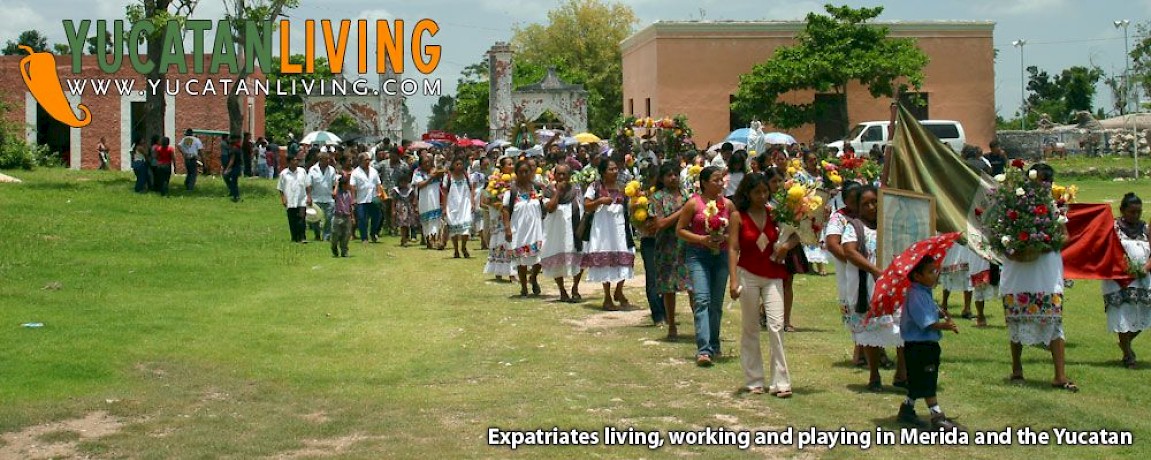


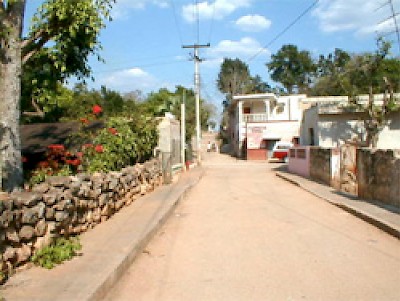
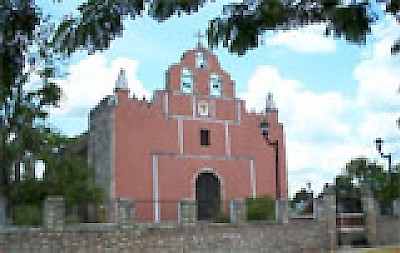
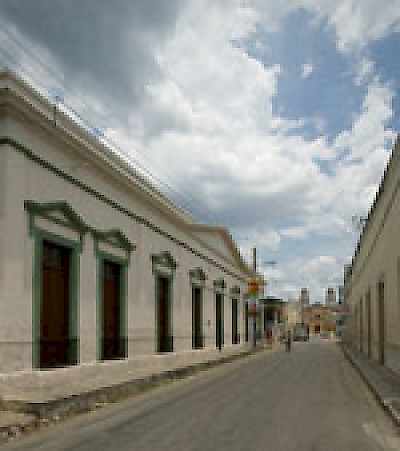
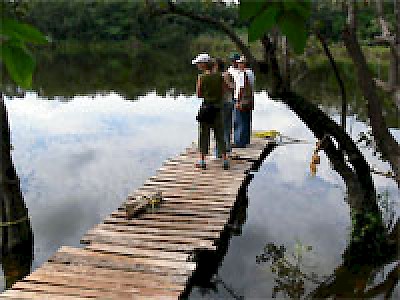
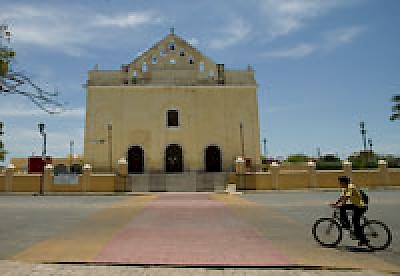
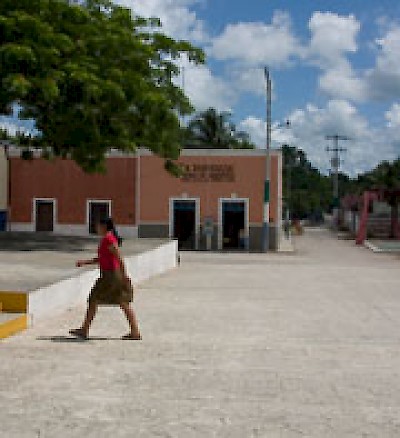
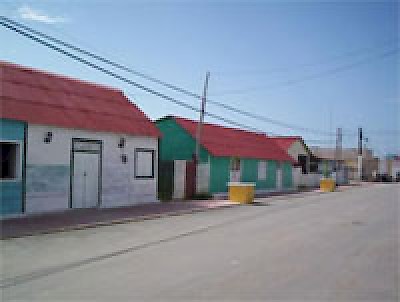
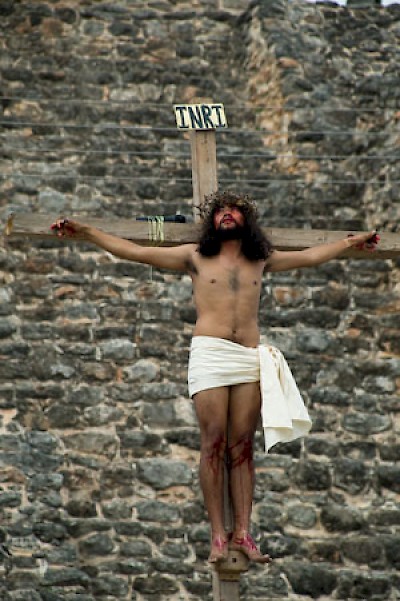
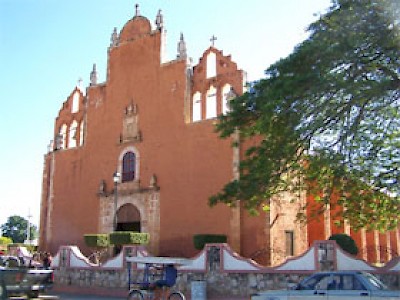
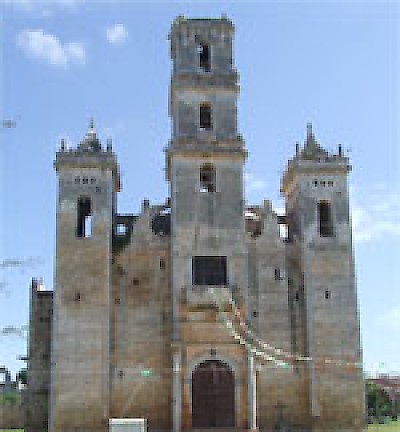
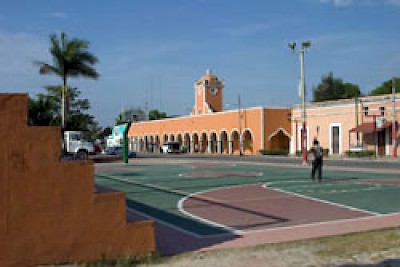
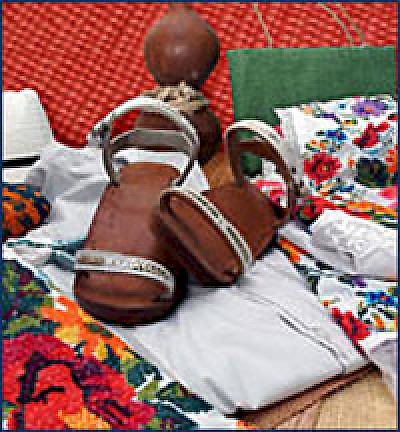
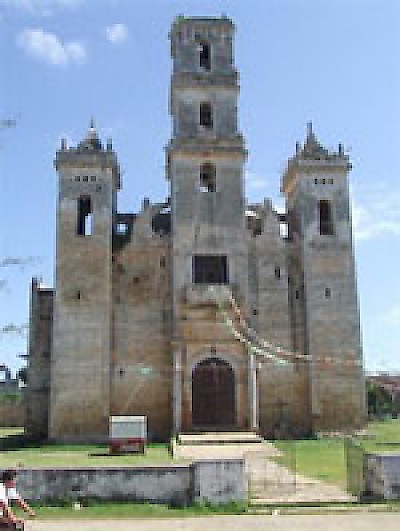
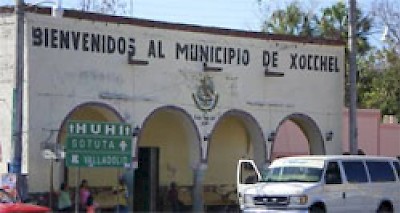
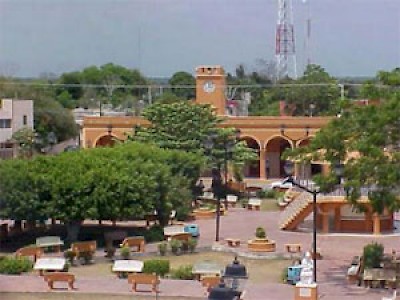
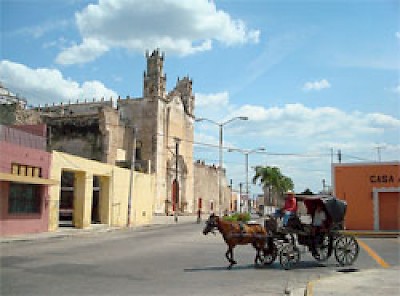
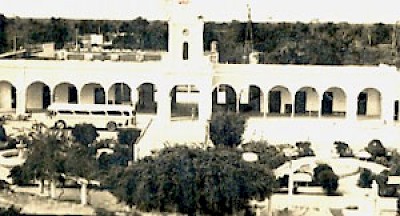
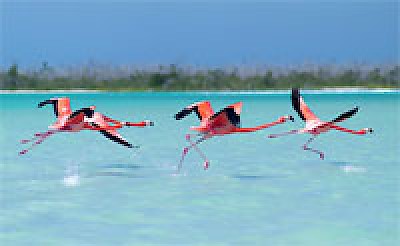
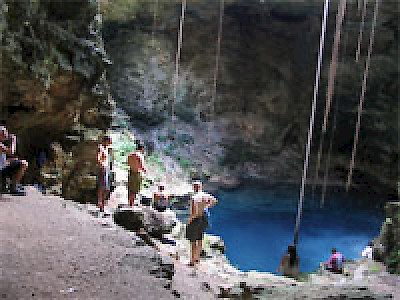
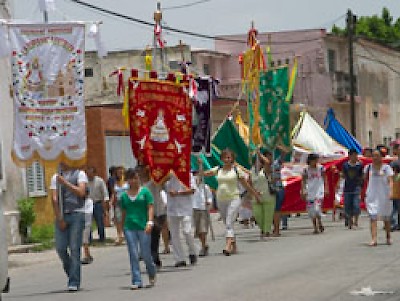
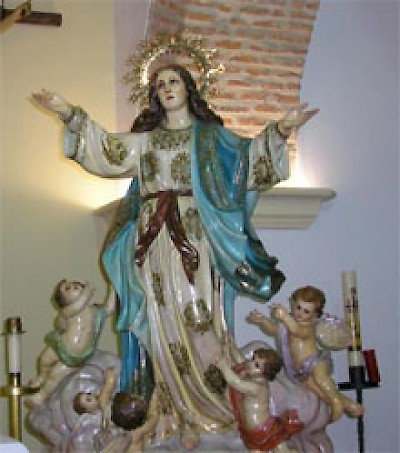
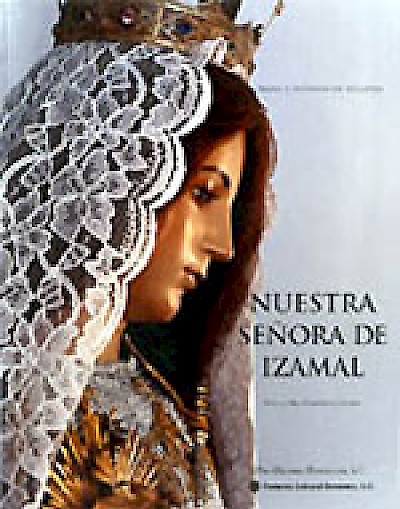
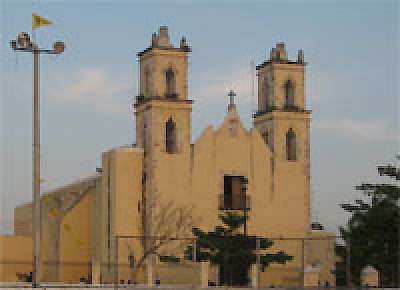
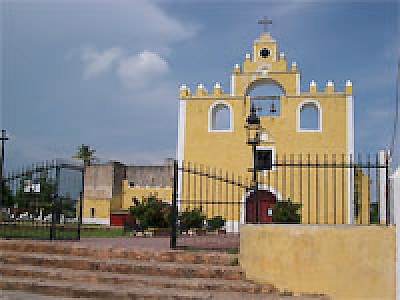

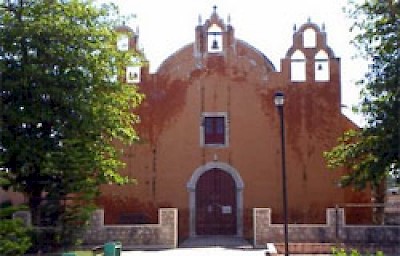
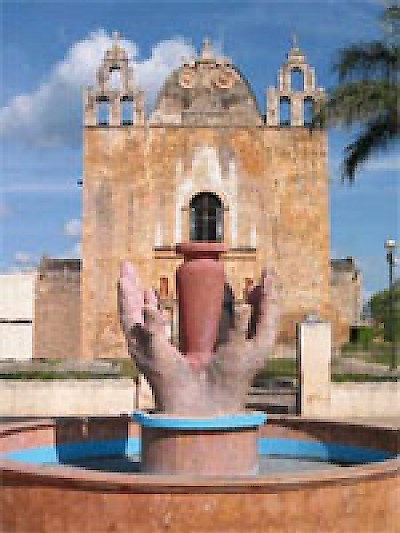
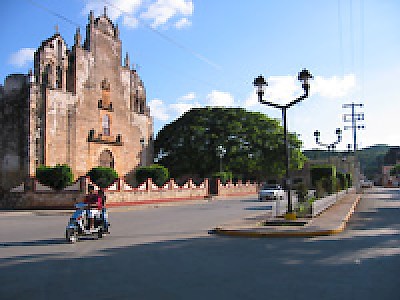
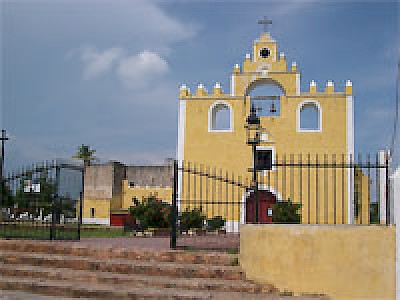
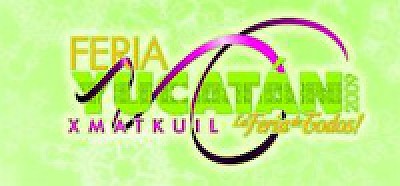
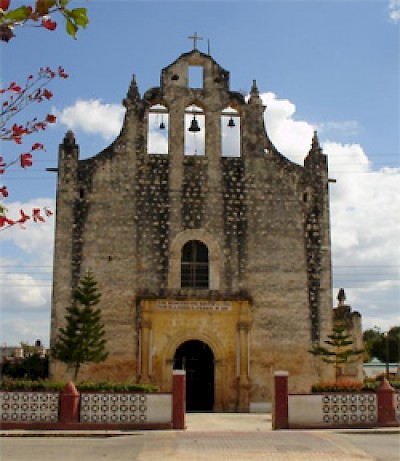
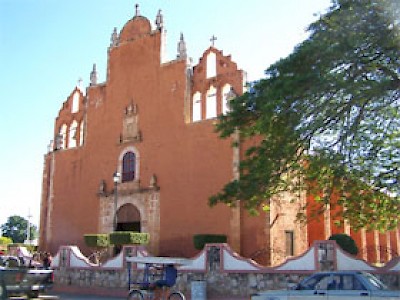
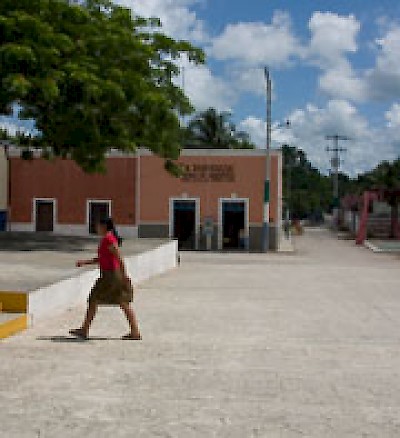
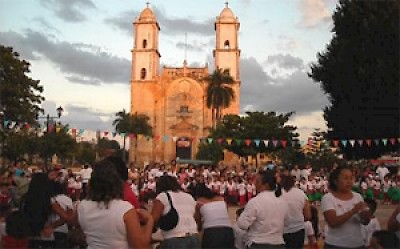

Comments
peto yucatan 15 years ago
en la villa de peto hay 3 fiestas tradicionales pero la mas conocida es la de diciembre...las corridas son para diciembre, mayo y agosto...
Translation: In the village of Peto, there are 3 traditional fiestas, but the most well known is the one in December. The corridas (bullfights) are in December, May and August.
Reply
Carol 16 years ago
Great article- will be spending 2 weeks in Merida this summer and this article will really help us "see the sights." Keep up your gret work!
Reply
Nan Logan 16 years ago
Thanks for a very interesting and useful article. Hopefully I will be able to plan better this year and get to see more of these Fiestas/Ferias
Reply
Alfred Rordame 16 years ago
Just a few notes and distinctions per Fiestas and Ferias.
In Izamal, the fiestas (both Cristo Negro October 18 for around 2 weeks and the Fiesta of the Virgin of Izamal) are also ferias and are in fact known more as ferias by the locals. Salient features include not only artisans and sellers of all manner of household goods, plastic wares, ceramic wares, religious icons, etc. but also a bullfight (regional bullfights are a far cry from the grand bullfights of Merida or Motul).
Another important feature of the ferias (or fiestas) is the vaqueria. This is a gathering of the folklorico dance troupes (usually invited from all the nearby pueblos). The vaqueria in Izamal is often marked by over 100 dance troupes as it is renowned for the high quality of its folklorico troupe.
The gremios (processions held by guilds or crafts associations) are also a wonderful opportunity to witness the intersection of Maya traditions. These begin with a procession through the town and culminate in a Mass and, depending on the guild, the pig dance, the ribbon dance, and in Dzitya, the turkey dance.
Reply
Beryl 16 years ago
Thank you SO MUCH for doing this. This information is hard to come by. Village fiestas are the best - especially the non-lethal bullfights.
I remember going to the Rio Lagartos fiesta about 20 years ago. All the young men danced around the village ALL NIGHT carrying a huge paper dragon, I think it was. Everyone kept them going with lots of alcohol. Most of us abandoned them by about 3 a.m., but they were still at it.
Reply
(0 to 5 comments)